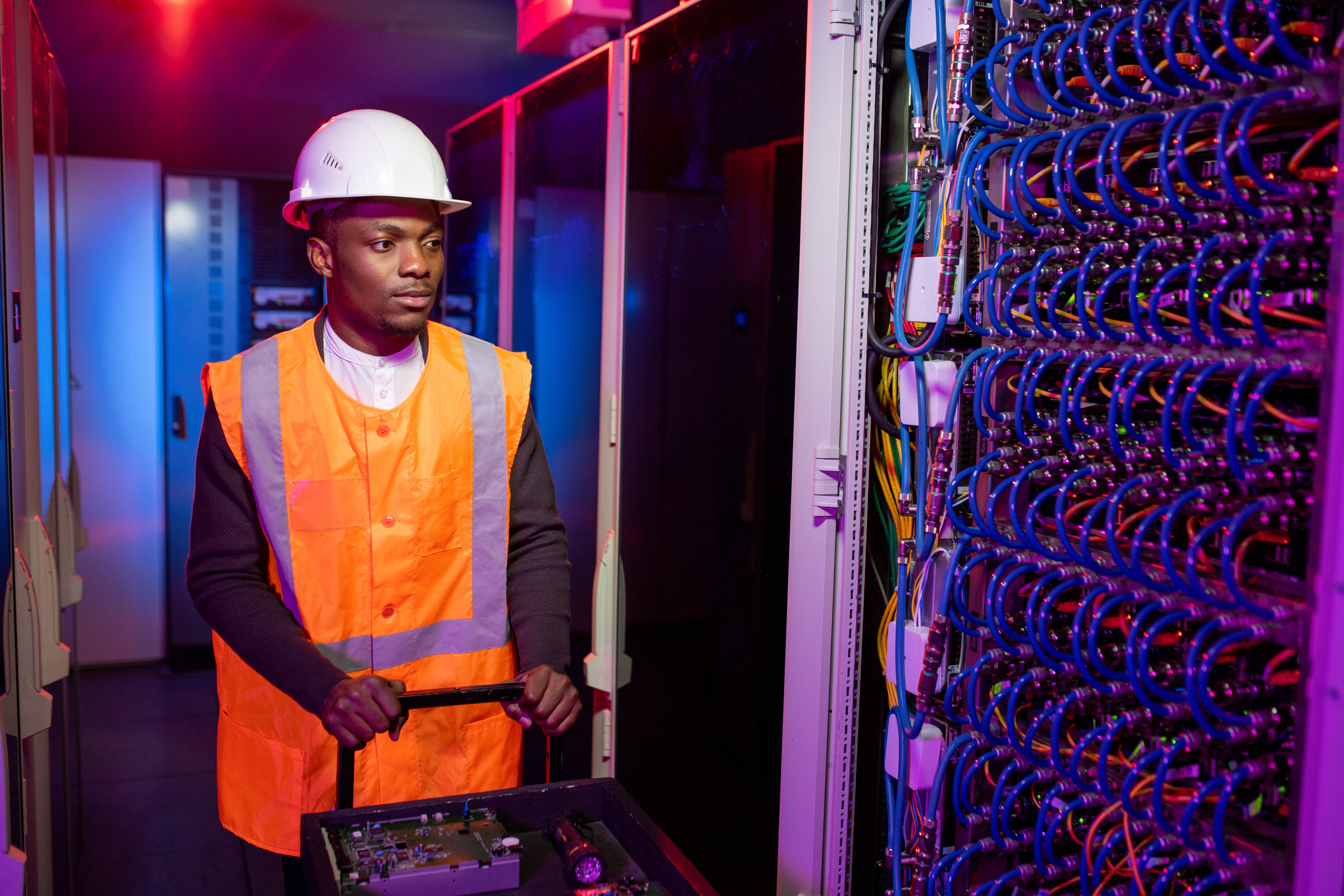Best Practices for Data Center Migration from Colocation Centers

Serious black data center electrician in hardhat pushing cart with tools while coming server cabinet for repair
Planning and Preparation for Data Center Migration
1. Comprehensive Audit and Inventory
Start by conducting a thorough audit of your current data center. Catalog all hardware, software, applications, and data. Understand dependencies and interoperability between systems to plan the migration sequence.2. Set Clear Objectives
Define what you aim to achieve with the migration, be it cost reduction, improved scalability, or enhanced disaster recovery capabilities. Clear objectives guide the planning process and help in measuring the migration’s success. Often consider selling the equipment rather than trying to relocate on equipment that may have to be upgraded in the near future. There are companies like TeleTraders that are specialist in the decommissioning and disposal of old network equipment that can offer funds to offset the overall cost of the migration.3.Partnering with the Right Vendors
The success of a data center migration or decommission often hinges on the quality of the vendors and partners involved. This includes not just the colocation provider but also vendors for critical components such as networking equipment, security solutions, and cloud services. If you decide to decommission equipment be sure to use companies that follow industry guidelines for data security and destruction when decommissioning equipment. Ensuring that these vendors have a track record of reliability and excellent support can significantly reduce the risks associated with migration.4. Risk Assessment and Contingency Planning
Identify potential risks and challenges that could arise during the migration. Develop contingency plans for critical scenarios to minimize downtime and ensure business continuity.Execution Phase
5.Detailed Migration Strategy
Developing a detailed migration strategy involves not only charting out the services and applications to be moved but also understanding their importance and role within the broader business ecosystem. This involves categorizing applications based on their criticality and planning the migration in such a way as to minimize disruption to the most vital services.6.Infrastructure and Connectivity
Assessing the infrastructure and connectivity options available at the colocation center is paramount. This includes evaluating the physical security measures, power and cooling capacities, and the redundancy and resilience of the network infrastructure. It’s also crucial to understand the connectivity options available, including direct connections to cloud providers, internet exchanges, and other interconnection services that can enhance performance and reduce latency.7.Compliance and Security
Ensuring that the colocation provider complies with relevant industry standards and regulations is crucial, especially for organizations in regulated sectors like finance and healthcare. This includes physical security measures, data protection policies, and compliance with standards such as ISO 27001, SOC 2, or PCI DSS, depending on the specific requirements of your organization. For decommissioning choose vendors that follow ITAD industry guidelines.8. Communication and Documentation
Maintain clear communication with all stakeholders throughout the migration process. Document every step, from planning to post-migration, to serve as a reference for future migrations.Post-Migration
9. Workload Optimization
Post-migration, it’s essential to optimize workloads to leverage the full potential of the colocation environment. This could involve re-architecting applications for better performance, implementing cost-optimization strategies, or adopting new technologies that were not feasible in the previous setup.10. Continuous Monitoring and Support
Set up continuous monitoring of the migrated systems to detect and resolve any issues promptly. Ensure that you have reliable support from your colocation provider for any unforeseen challenges.11. Regular Audits and Reviews
Conducting regular audits and reviews of the colocation setup can help in identifying areas for improvement, ensuring compliance with evolving regulations, and aligning the IT infrastructure with changing business needs. This proactive approach can help in avoiding potential issues and optimizing costs.
